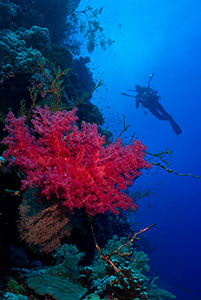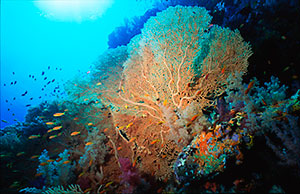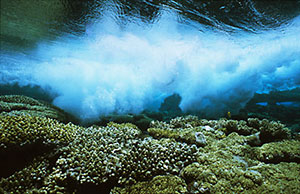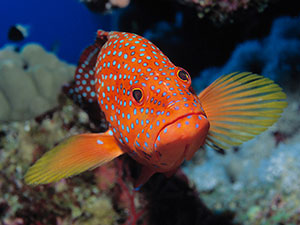|
|
NEUTRAL BUOYANCY
Neutral buoyancy helps you to manoeuvre close without bumping into anything.
You can hover and hold your position without having to fin. If you are hovering near the seabed, and are negatively buoyant, you are likely to fin and stir up sand. [Also, to reduce backscatter, make sure strobes are aimed to hit the subject and not fall short of it, which would light particles between the lens and the subject.]
|

|
With neutral buoyancy you can move in smoothly so as not to frighten the fish. It helps in reversing out of tight spots too.
|
 |
| In open water with eye to viewfinder, it is easy to lose track of your depth - neutral buoyancy helps to keep your level constant. |
|
 |
Take care in surf and surge. Waves can pull you onto the reef. Neutral buoyancy helps you to keep control of your position, but you need to stay alert and ready to swim out of danger. Here you want to stay off the reef but there are occasions when negative buoyancy helps – when you’re trying to keep stable on the sea bed, especially in a swell or current, but remember to put some air back in your BC before you lift off. |
GET CLOSE
Get close for the impact of a frame-filling subject, and less water between lens and subject gives vivid colour and definition.
If you get close you can eliminate an unappealing background, or throw it into soft focus [with 50 mm macro or longer lens].
|
 |
|
| Close-focus wide-angle keeps the emphasis on the main subject
|
If you cannot get close to shy fish, there are approachable ones around. A good shot of something commonplace is worth a thousand times more than a poor shot of something rare. Just make sure you take the time to capture a good composition. You can make lots of different images out of common “easy” subjects. |
 |